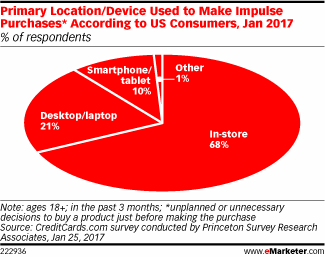Retailers paint a mixed earnings picture, but they all agree on one thing –
Walmart, The Home Depot and Macy’s fiscal Q4 2016 earnings painted a mixed picture Tuesday, but they all highlight one common theme: Physical stores are still important, and online sales and digital strategies are key to bringing traffic and sales to stores.
“While ecommerce is growing rapidly, customers continue to rely on brick-and-mortar formats,” said Walmart president and CEO Doug McMillon on a prerecorded conference call. “The supercenter remains the best retail format in the world.”
Walmart’s namesake US stores reported a better-than-expected 1.8% increase for the fiscal Q4 same-store sales, sending the Dow component’s stock 3% higher at the close of the market. Online sales at Walmart US jumped 29%, driven partly by last year’s acquisition of Jet.com as well as online grocery sales.
In a tactic that many brick-and-mortar retailers are trying to employ to their advantage, Walmart is using web-initiated transactions including online orders for same-day, in-store pickup, as well as “ship-to-store” to help drive traffic to its physical locations (and hopefully ink additional impulse purchases).

To better compete against Amazon.com, Walmart has introduced free two-day shipping without a membership fee and lowered the minimum order threshold required for free shipping, from $50 to $35, which the company said has helped its online sales since the January 31 launch. (Likely in response to Walmart’s move, Amazon cut its free-shipping minimum threshold back to $35.)
Research has showed that consumers tend to prefer retailers with both a physical and online presence, partly to make it easier to return products.
“Customer expectations continue to change rapidly,” McMillon said. “They will increasingly expect even more personalization and convenience in their shopping experience.”
Macy’s, for its part, reported a 2.1% decline in same-store sales, while its online sales rose at least 10%. In another sign that sales between physical and online channels continue to blur, Macy’s CFO Karen Hoguet said on a call it’s not possible to “perfectly distinguish sales between channels,” though she noted that “customers are choosing to purchase less in stores and more through digital means.”
Macy’s and other department stores have also been hurt by shifting consumer spending on home improvement, healthcare, automobiles and experiences as opposed to fashion products. (Department stores—heavy importers of apparel and other items—are keenly watching the development of House-proposed border adjustment tax, which retailers have said will force them to raise product prices.)
To respond to changing consumer spending, Macy’s is introducing more products exclusive to its stores and is investing on improvement to its mobile app and other online initiatives.
Additionally, the company has announced plans to close a total of 100 stores. “This will give us a healthy physical portfolio, one that complements our growing digital business,” said CEO Terry Lundgren. “This is how the large majority of Americans shop. Ninety percent of what we sell at Macy’s and Bloomingdale’s is still sold in a physical store. Physical stores will play an extremely important role in the future of shopping, for us as well as for others.”
The Home Depot, on the other hand, is benefiting from an improved housing market and consumers’ increased spending on their homes. The home-improvement giant saw its Q4 2016 US comparable sales jump 6.3%. Online, which now represents 5.9% of its total sales, was also a key contributor to this growth, as The Home Depot upgraded its mobile app and redesigned its website to speed online checkout and make it easier for consumers to search products.
“While we are seeing significant growth in our online business, our stores have never been more relevant,” said Craig Menear, chairman, CEO and president of The Home Depot, on the company’s earnings call.
Menear added that about 45% of Home Depot online US orders are picked up in-store. It’s “a testament to the power of our interconnected retail strategy.”
As online and physical sales are further intertwined and retailers increasingly credit online sales to in-store employees, “interconnected retail” may look to be a new industry buzzword.
by Andria Cheng

